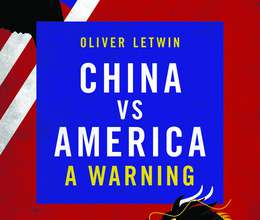Biteback Publishing , 2021
By Brian Boyd
This is the second of a three-part series
The causes of failure in the international system
The above heading leads chapter 8 of Letwin’s book.
He promotes the need for an effective ‘principal of non-aggression’ between nations. Such an approach was finally codified in the 2010 amendment of the Roman Statute of the International Cirminal Court (I C C), but he emphasises that the US, China, Russia and India are still not parties to this ‘non-aggression’ code.
The essential purpose of the UN itself, contained in the first two articles of the UN Charter, is that member states should settle disputes through diplomacy and arbitration rather than through warfare. Yet, Letwin points out that there is incomplete global consensus in favour of the principal “that no state should unilaterally be the first mover in an armed conflict”.
He further points out the fundamental problem is the international, rules-based system “is not in fact global”. It is essentially a creature of the US.
The division between the so-called ‘Western and Eastern’ views concerning the proper role of what an international rules-based system would look like, is not confined to why the current system has proved to be so ineffective is that it cannot manage the power relationships between the global superpowers of the 21st-century. Letwin insists it is specifically ‘proving to be ineffectual in constraining the powerful, influencing unfair trade practices, unable to protect global financial stability and being unbalanced in all of its institutional structure’.(p 132).
On the issue of international trade Letwin addresses the operations of the General Agreement on Tariffs and Trade (G A T T) and the World Trade Organisation (W T O) where, “at first glance”, their purpose appear to be fair and balanced. However a key loophole is the ability of groups of member states to form so-called ‘free-trade areas’.
In theory member states establishing such an asymmetric relationships should allow the WTO to deem adequate compensation for any damage done to the trade interest of other WTO members ‘. This hardly ever happens.
Letwin points out: “Essentially, if a group of rich, highly developed countries get together to remove or reduce tariffs between each other, then they can continue to set whatever tariff barriers they had previously set against exporters from other parts of the world. This is blatantly discriminatory.”
It is further pointed out that even more profound asymmetry is lying concealed within “the supposedly balanced, rules-based system of international trade”. The fact is that under G A T T and W T O they do not manage all trade but rather a system of trade in goods only. There are at least two other forms of inter—nation economic flows which actually outweigh the trade in goods.
These are the export of services (including digital services) and the export of capital. There are hardly any global rules capable of insuring balanced and fair exchanges in these domains. Up until recently the major powers of the US, EU, Britain and Japan controlled outright dominance in these fields. The emerging economic ascendancy of China is now challenging this status quo.
Many parts of the world remain “at a profound disadvantage” at the hands of major multinationals in control of technology and finance.
Such issues, Letwin argues, challenge the sustainability of the post-World War II international rules generating an increasingly multi—polar world.
‘ … Loggerheads…’
In chapter 11 Letwin gives a little history lesson about how the major powers are currently at loggerheads. The US modern era began after 1945 with the defeat of the fascist axis powers, while, by contrast, the modern era for China began after 1978, with the then leader Deng Xiaoping launching a radical economic plan.
US policy-makers were apparently caught off guard with the unanticipated emergence and speed of China as a rival economic superpower. The current generation of Washington leaders are particularly unhappy about China disrupting “the comfortable norm of US global dominance”.
According to Letwin, “each expansion of Chinese influence is seen as destabilising the global marketplace that the US sees itself as protecting’’.
In turn, Letwin says that the Chinese are unabashed in justifying employing ‘’market mechanisms under a high level of central direction’’ and what they regard as deserving “the proper sphere of its own historical influence”.
He goes on to suggest that the US long promoted claim “to a superior global morality appear and best questionable” and getting wider traction!
The history of aggressive US ‘’mercantilism and imperialism’’ with its resulting ‘unfair treaties’, linked with “the distorted international rules-based system” incorporating much vested US interests, as well as the US record of “invasions, bombings and abuses of human rights”, neutralises any claims to morality, in Letwins’ view. With the never-ending propaganda war between the US and China in particular, all aimed at public consumption, it is interesting that Letwin strongly suggests it is not a clash of ideologies “between hardliners in Beijing and hawks in Washington”, but arises from “fundamentally diverging conceptions of the ordering of the world”. To Letwin: “The heart of the matter is that the rise China…[is]… about who should lead the world, quite regardless of any ideological divergence …[and]… that is the dangerous state of affairs which we must seek to alter if we are to be confident of preserving world peace.”(pp204-5).







